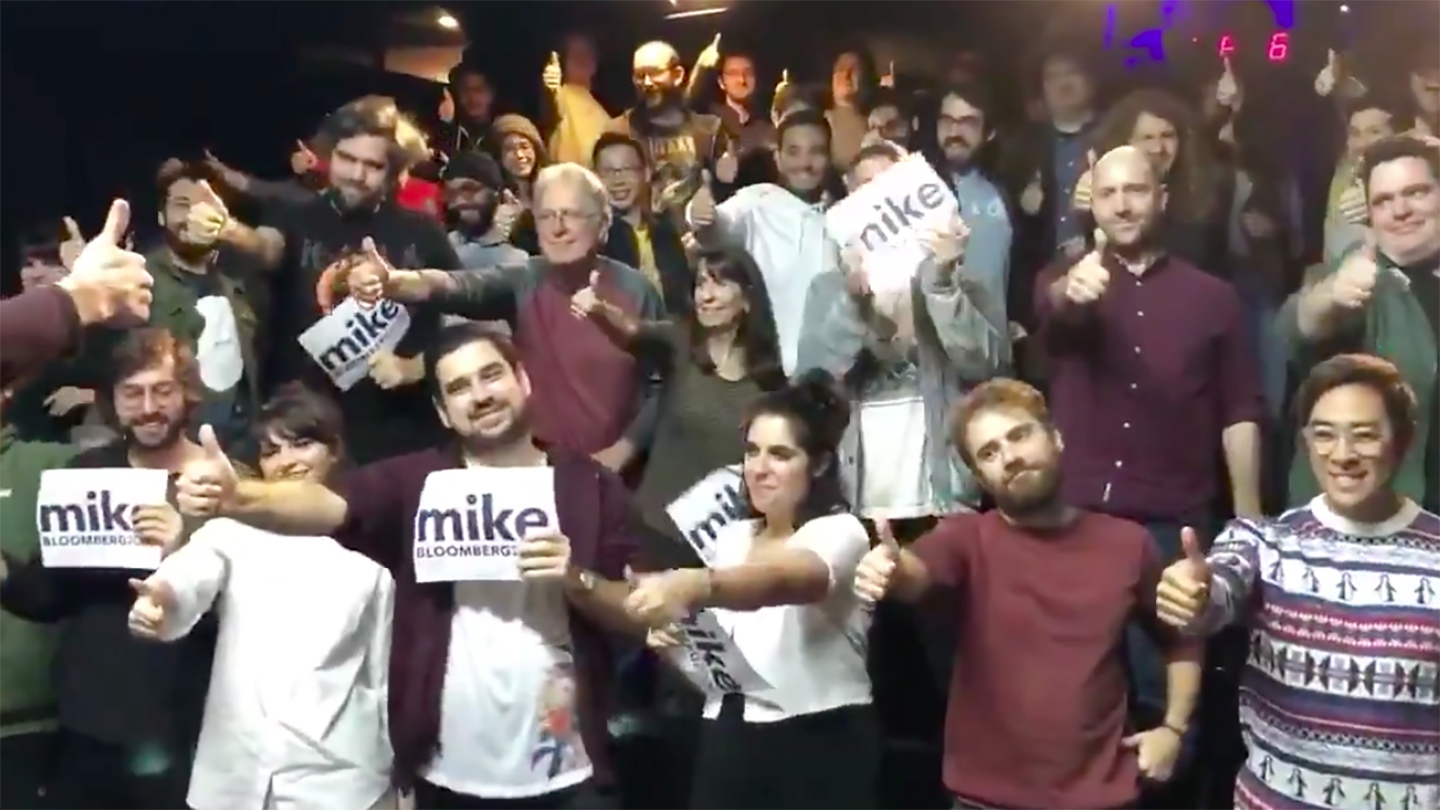These Are the Comedians Behind the Fake ‘Bloomberg Dance’ Viral Video

Credit to Author: Harry Cheadle| Date: Fri, 13 Dec 2019 19:52:09 +0000
In a sane world, the satire made by comedians Brad Evans and Nick Ciarelli would never fool anyone. The duo, who often perform at UCB theater in Los Angeles, have made a name for themselves as extremely online surrealist pranksters. They've parodied the jokey, weirdly sexual way brands talk on Twitter to the point where the social media platform dinged them for violating Twitter rules. They've paid Z-list celebrities to record messages for Cameo, a service where people can pay "famous" individuals to say things. (They recently got Robert Wuhl, who played Arliss in Arli$$, to record a message for their Arli$$-loving 10-year-old son, who is not real.)
Their latest stunt, a dance performance they said was from a "Mike Bloomberg rally in Beverly Hills," a parody of a real Panic! At the Disco dance done by Pete Buttigieg supporters, was just as over-the-top. The mostly white, clearly uncoordinated crowd was obviously not well-dressed enough and too young to be in actual Beverly Hills, and the space in which they were "dancing" to the Maroon 5 classic "Moves Like Jagger" was much too dingy and cramped to be a Bloomberg fundraiser—it looked like a UCB theater, which is exactly what it was. (The dancers were audience members at one of their recent shows.) And though Ciarelli and Evans changed their Twitter bios and photos so they appeared to be part of the Bloomberg campaign, phrases like "Bloomberg Heads" in their tweets should have— should have—been a dead giveaway.
And yet, people from across the political spectrum, from all walks of life, began tweeting the video as if it were real. Sometimes they quote-tweeted Ciarelli's post, sometimes they posted the video themselves, which removed the context and likely made it seem a bit more real. Occasionally people who were in on the joke spread it in the spirit of fooling others, like Jacobin founder Bhaskar Sunkara, who told VICE he knew it wasn't real when he tweeted about it. But some prominent Twitter elites got completely juked.
"I got fooled," admitted Winners Take All author Anand Giridharadas. "What should have given me pause was that the crowd was far more diverse and better at dancing than you’d expect for Bloomberg supporters, even though it wasn’t diverse at all and those people couldn’t dance." (Giridharads has deleted his tweet about the video.)
New York Times White House correspondent Maggie Haberman didn't seem completely credulous of the video, but she was confused. Others used the opportunity to dunk on Bloomberg supporters in a way that suggested they thought the dance was real, including right-wing wunderkind pundit Ben Shapiro, MSNBC pundit Zerlina Maxwell, right-wing TV host John Cardillo, and disgraced former White House aide Seb Gorka, who wrote, "Apparently NOT a parody." In replies and quote-tweets, left-wing and right-wing accounts alike mocked Bloomberg while apparently not realizing the video was mocking the guy they hated.
"I fell for the Bloomberg dance bit hook line and sinker," tweeted architecture and culture critic Kate Wagner Thompson, who created the site McMansion Hell. So did a lot of people—so many that BuzzFeed News reached out to the Bloomberg campaign to confirm that it wasn't real. (Ciarelli and Evans, who are still claiming to be Bloomberg campaign representatives on Twitter, declined to comment for this story.)
The most forgiving way to interpret this response is that so much of real news seems fake these days that it's sometimes difficult to differentiate parody from the impossible-to-parody reality of politics. How much dumber is the Bloomberg dance from the Buttigieg dance that inspired it, after all?
The slightly less forgiving way to put it is that social media has made us all measurably dumber: less inclined to pause before sharing something absurd or making fun of it and willing to believe any bizarre or horrible thing about someone we hate (who on Twitter does not hate Michael Bloomberg?). Maybe everyone always had these tendencies but they are more easily exposed at a time when anyone can take out their phone and in a few thumb-taps share their often-misinformed thoughts with the entire world.
The Bloomberg dance video is, on its own, a simple parody of the terminal lameness of political campaigns. But as it spread, it morphed into a more biting satire of the credulity of the people who spend all day online and our inability to sort fact from fiction. The content that gets created every day by advertisers, celebrities, political actors, and what's left of the traditional media adds up to a big stupid mess of confusing nonsense, and every day we log on and eat big heaping spoonfuls of it and ask for more. What Ciarelli and Evans's work reminds us is that the internet—which is made up of all of us—is not as smart as it thinks it is.
Sign up for our newsletter to get the best of VICE delivered to your inbox daily.
Follow Harry Cheadle on Twitter.
This article originally appeared on VICE US.